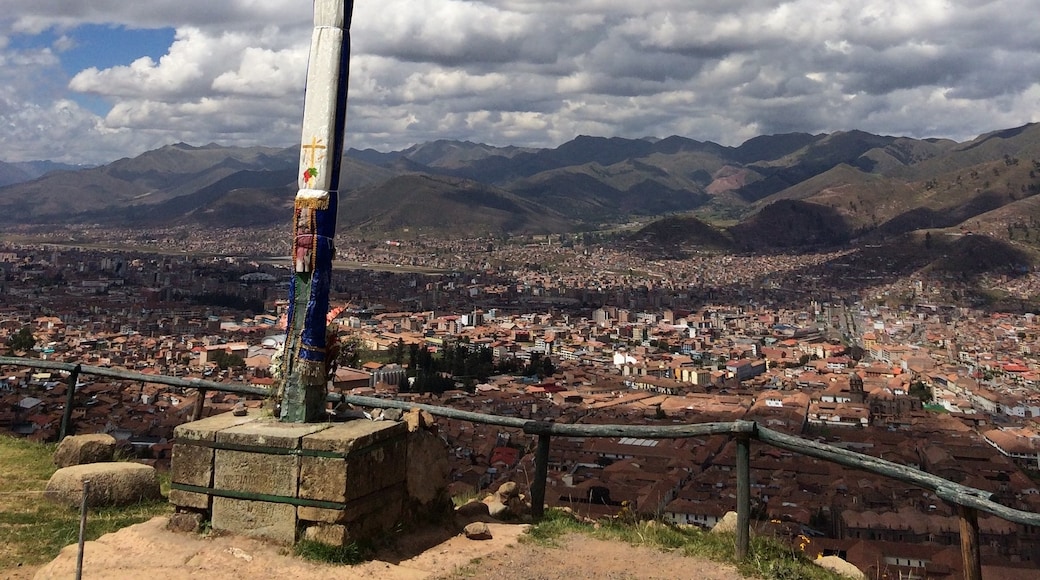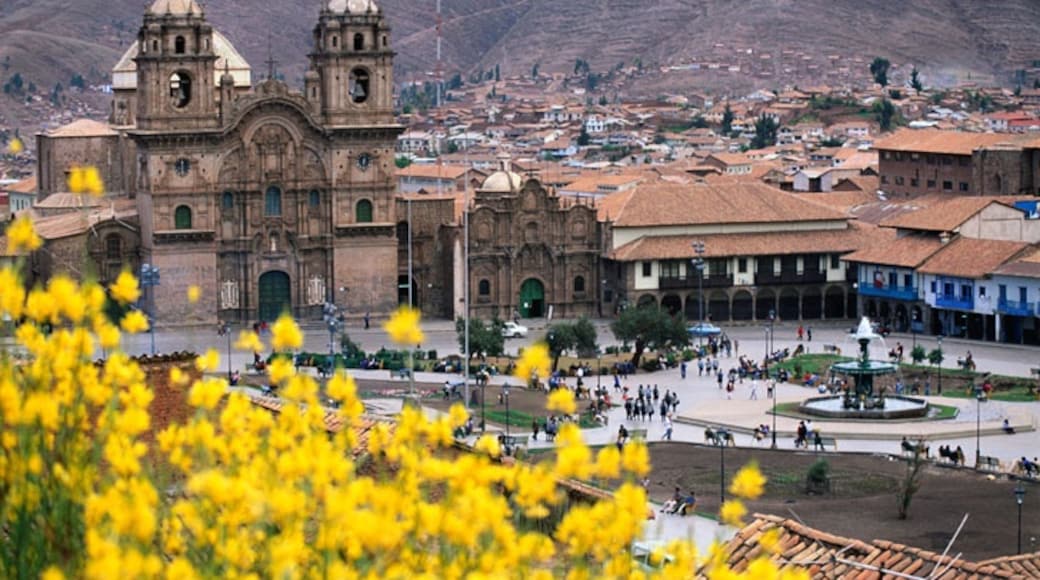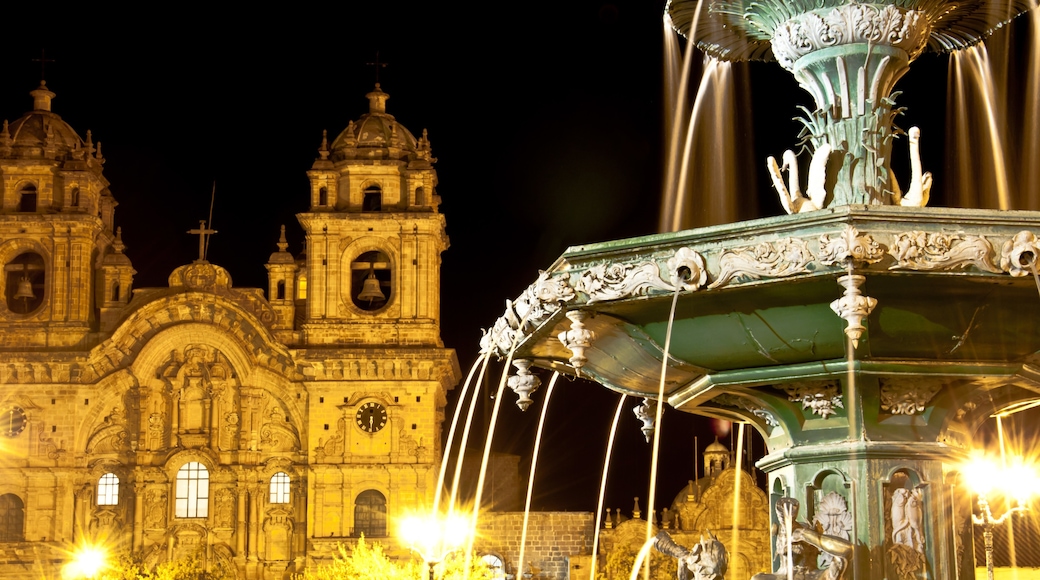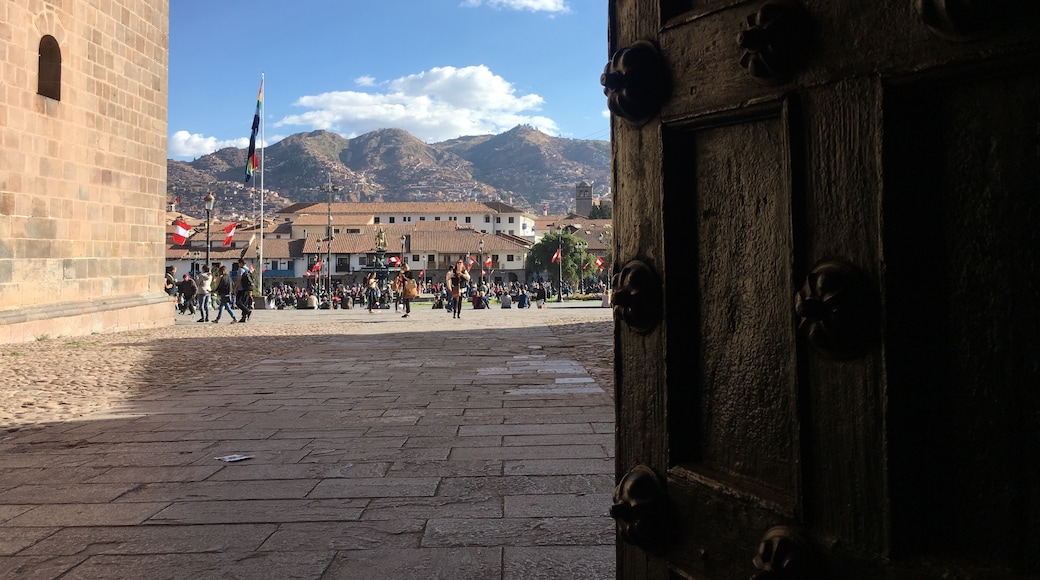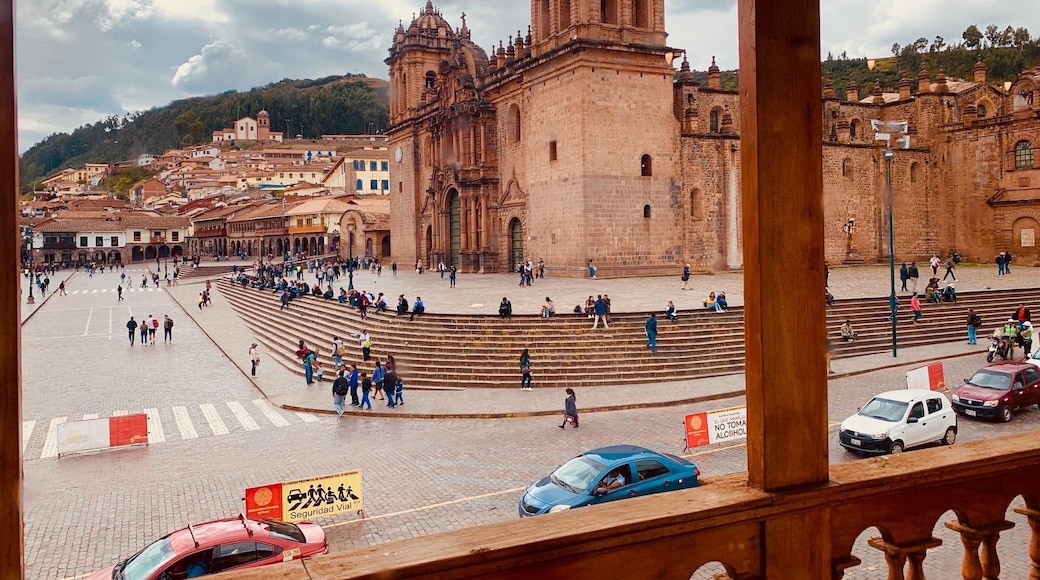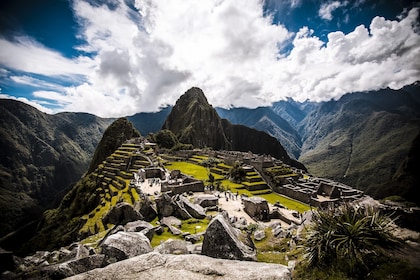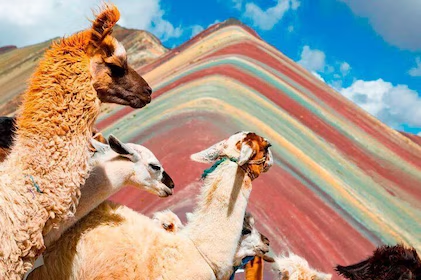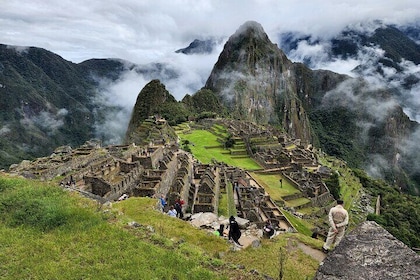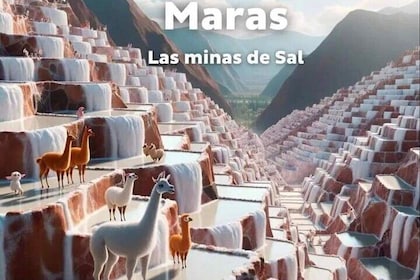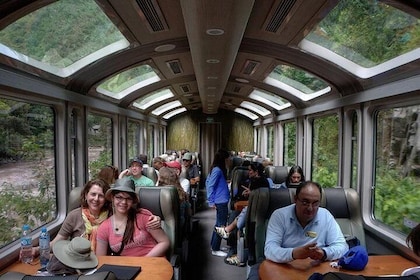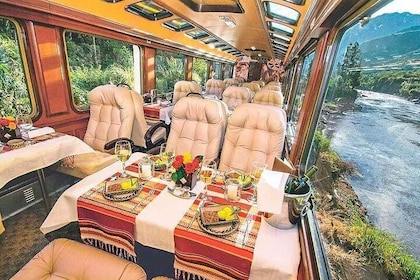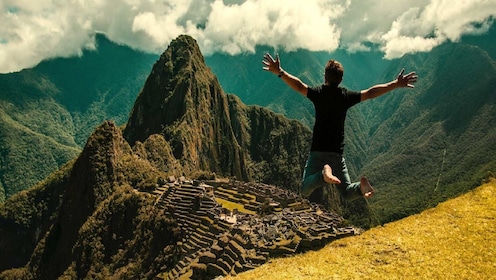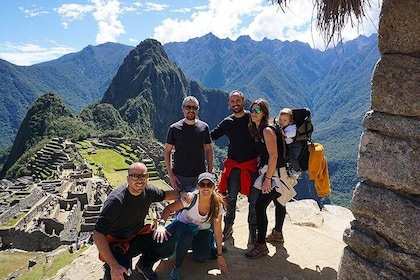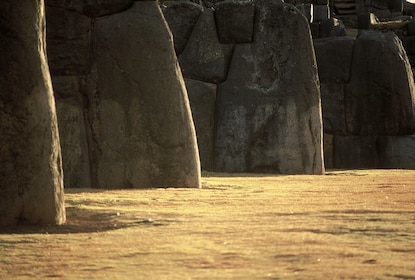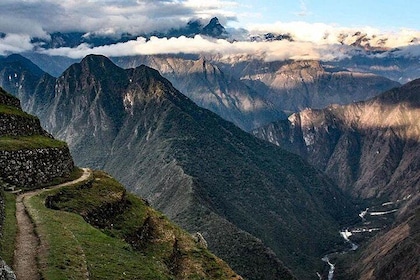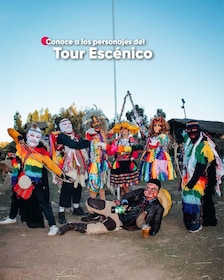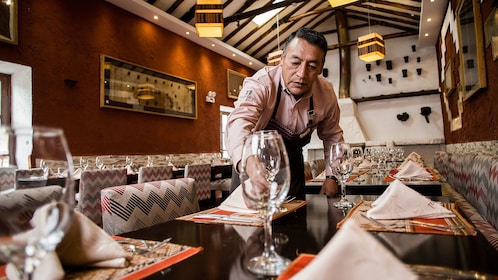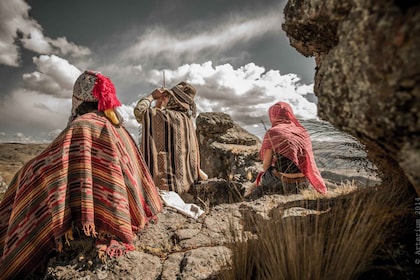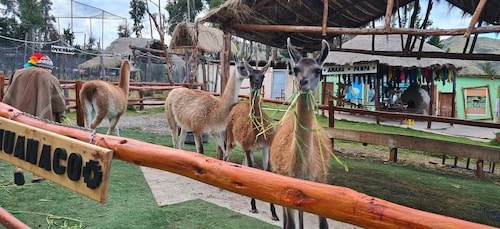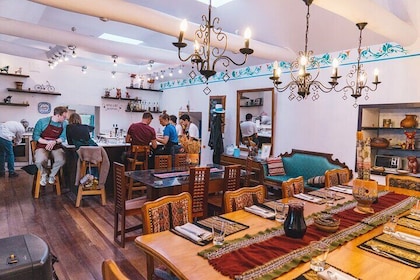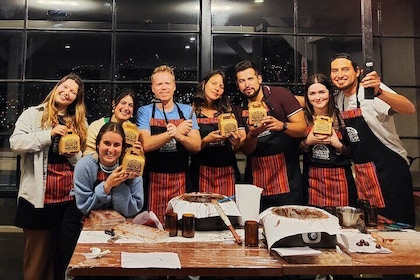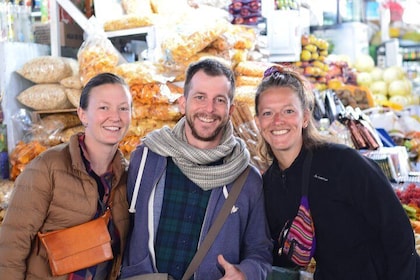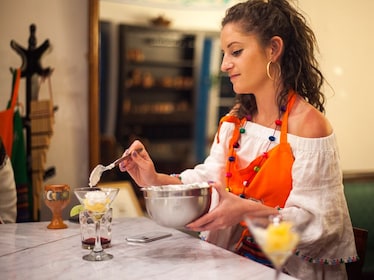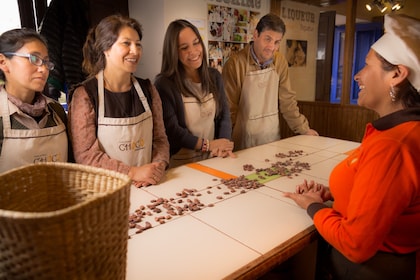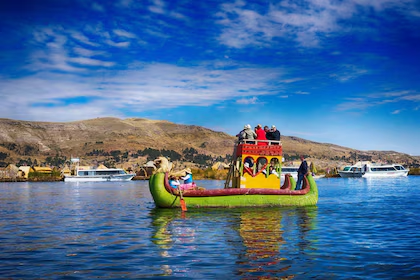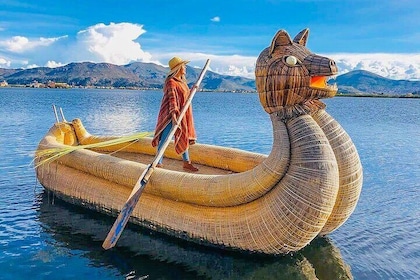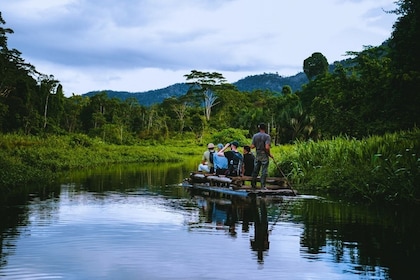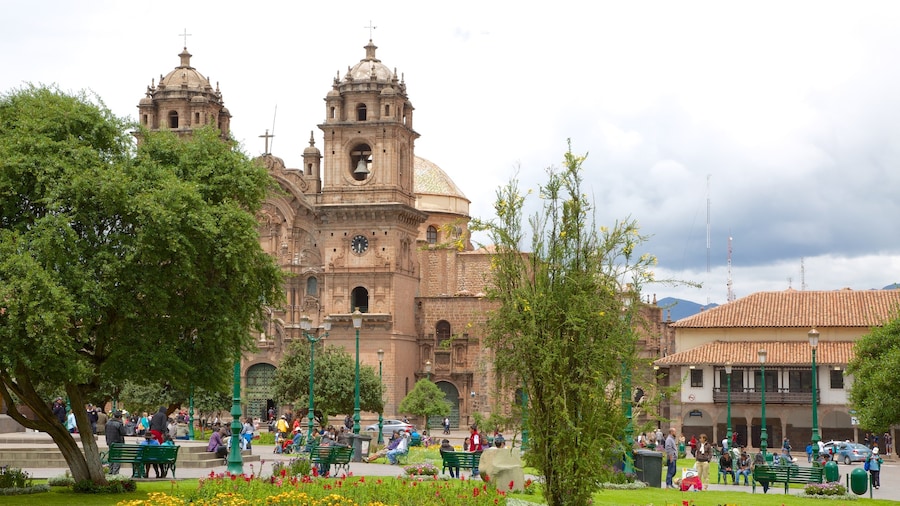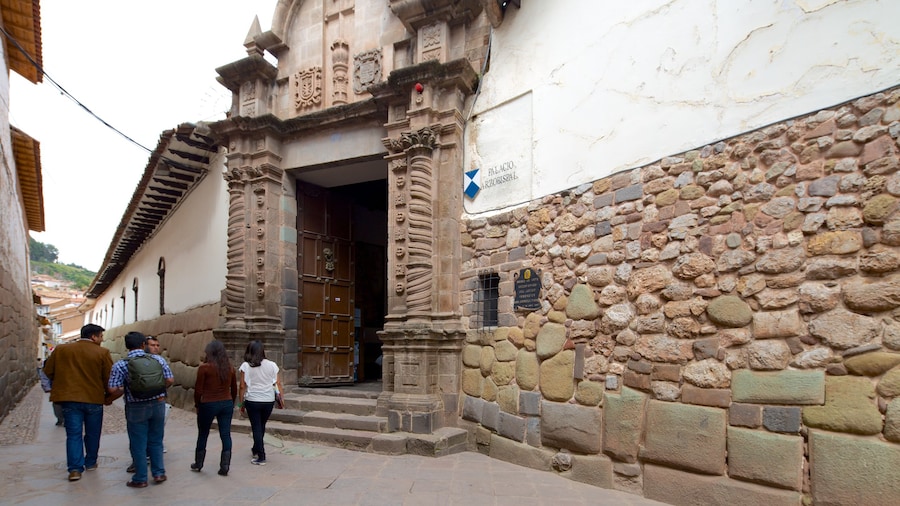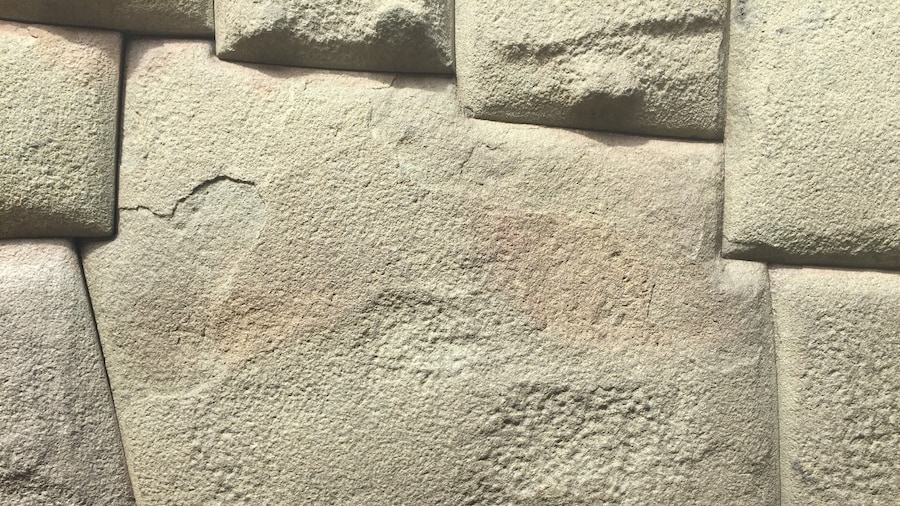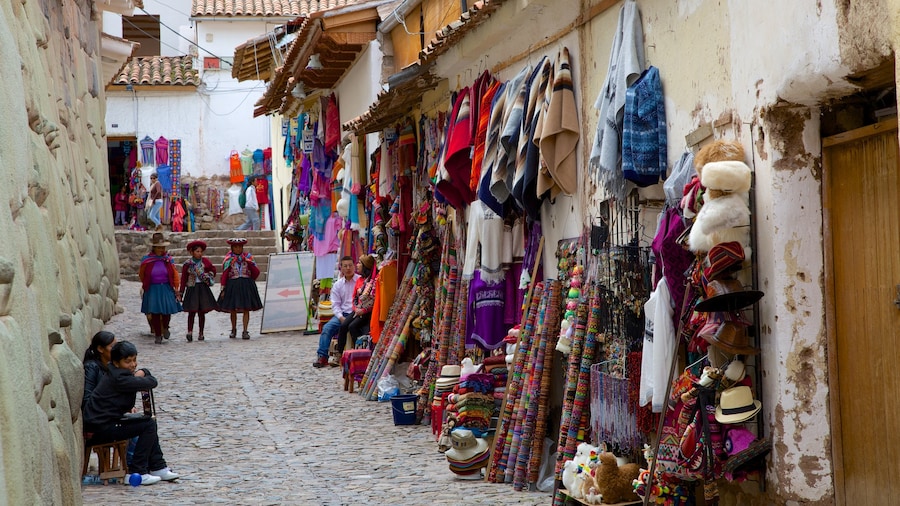Standing over Cusco’s main square is Cusco Cathedral, an impressive Gothic-Renaissance structure built on the site of an Inca palace. Explore the interior, filled with more than 400 canvases, woodcarvings and a silver altar.
Construction on the cathedral started in 1559 and was completed almost 100 years later. Many of the stones were taken from the nearby fortress of Sacsayhuaman. On your way inside, note the carved figure of a puma head on the main doors, which was erected by the Inca workforce during the cathedral’s construction. In Inca mythology, the puma represents the physical world.
Admire the numerous artworks, many of which are from the Cusqueña school of painting. This was a Cusco-based Roman Catholic artistic tradition from the 16th to 18th centuries. Don’t miss the painting depicting Jesus and his disciples at the Last Supper eating roasted guinea pig and tropical fruit.
Pay a visit to the Lord of the Earthquakes. This icon of Jesus was paraded through the streets by terrified residents during the devastating earthquake of 1650. Many people claimed the carved religious figure stopped the seismic activity. Every Easter Monday, you can watch the statue as it is carried in a procession through the city.
Marvel at the main altar, which is made of solid silver. Appreciate the craftsmanship of the cedar wood choir with its carved figures of bishops, popes and saints. Visit the cathedral’s sacristy where the walls are covered with paintings of Cusco’s bishops. Head to one of the towers to see the 7-foot (2-meter) María Angola bell, the largest bell in South America.
Cusco Cathedral is open daily. Situated on Cusco’s main public square, Plaza de Armas, the cathedral is easily accessible on foot and by bus from many parts of the city. After your tour of the cathedral, visit the two other churches on the square. The Church of the Society of Jesus contains canvases and silver artwork. The Church of Triumph hosts the ashes of Garcilaso de la Vega, a prominent Spanish writer.
